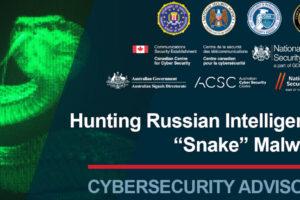
New portable system employs two methods of detection for increased accuracy and reduced false positives.
New and improved gunshot detection technology will soon make American communities of all sizes safer. The Science and Technology Directorate (S&T) and its industry partner Shooter Detection Systems (SDS) developed SDS Outdoor, a gunshot detection system that builds on existing SDS technology to deliver new capabilities that significantly improve the response and management of outdoor shootings.
Among these new capabilities are portability and ease of system set up at any location, two-source detection—sound and flash—to confirm a gunshot, real-time alerts that provide near-instant situational awareness to law enforcement and emergency medical responders, and enhanced data recording that aids apprehension and conviction of alleged shooters.
Portability allows the system to be set up practically anywhere, including near outdoor events, and a single person can install it. Additionally, the enhanced system tells law enforcement when and where a gunshot originates, cutting response times dramatically and providing police officers actionable information—for example, data that helps them to determine if there is a single shooter or multiple shooters. Agencies can then use that information to coordinate resource response and counter an active threat.
“It takes about two to three minutes for an individual to call 911 after a gunshot. Gunshot detection technology cuts that time in half and sends a notification to local law enforcement. Police could then dispatch a unit quicker to either stop the incident that's occurring or to assist in preventing any lives being taken,” said Wilhelm Thomas, officer with the New York Police Department’s (NYPD) Counterterrorism Division. “If we're there first, we can lock down the scene. This will provide security for the emergency medical services (EMS) and thus help prevent the loss of more lives.”
Although gunshot detection technology is currently in use, it can only be installed at fixed locations. For outdoor public events, portable gunshot detection technology can add another layer of security to already installed security systems like cameras.
“This system does not prevent gunshots. It detects an ongoing shooting to help first responders get there faster,” said Anthony Caracciolo, S&T program manager for First Responder Technology. “The more details officers have about an incident, the quicker they can identify and eliminate the threat, and EMS can tend injured victims safely.”
More than two years ago, S&T’s First Responder Resource Group set out to extend gunshot detection capabilities to locations that do not support fixed deployments, such as open areas where large crowds may gather temporarily. Since then, the project has progressed into prototype design, gathering opinions from first responders, and, most recently, a November 2022 Operational Field Assessment (OFA) led by S&T’s National Urban Security Technology Laboratory (NUSTL).
“We started this project because most existing gunshot detection technologies come with limitations, and they may also trigger false alarms,” said Caracciolo. “An outdoor mobile detector that can be easily deployed in the field for a concert or other outdoor event is needed.”
Detecting gunshots almost instantly
SDS Outdoor has several interesting added features. For starters, one to two people can transport and install the system. Also, the tech delivers critical intelligence about an outdoor shooting incident almost instantaneously to first responders. Moreover, it dramatically reduces false-positive alerts.
“Unlike other detection systems, which mostly rely just on acoustics, our indoor gunshot detection system pairs two types of sensors—for the firearm’s infrared flash and acoustic bang—to get the false-alert rate way down,” said Richard Onofrio, SDS’ managing director. “We've applied that same concept to this development where we've increased the coverage area considerably.”
Prior to an outdoor event, officers can map out placement locations, install the system in minutes, and select the response agencies whom SDS Outdoor will alert if a shooting occurs.
As a plus, the gunshot detection tech’s alerting software integrates with the existing platforms used by first responders, including security cameras and dispatch systems. If internet is unavailable at an event site—no problem! The tech can communicate with the software application directly in more of a ‘local only’ mode.










